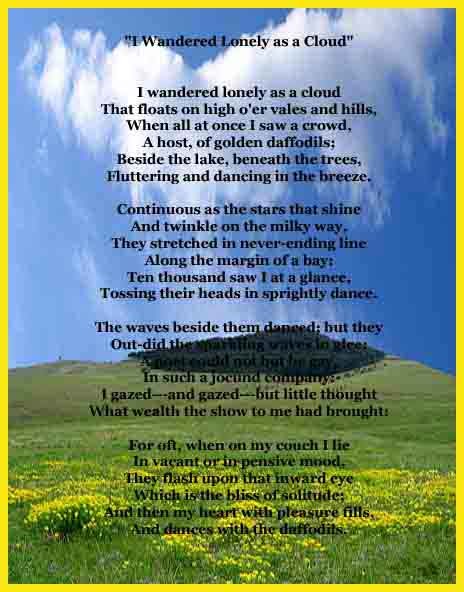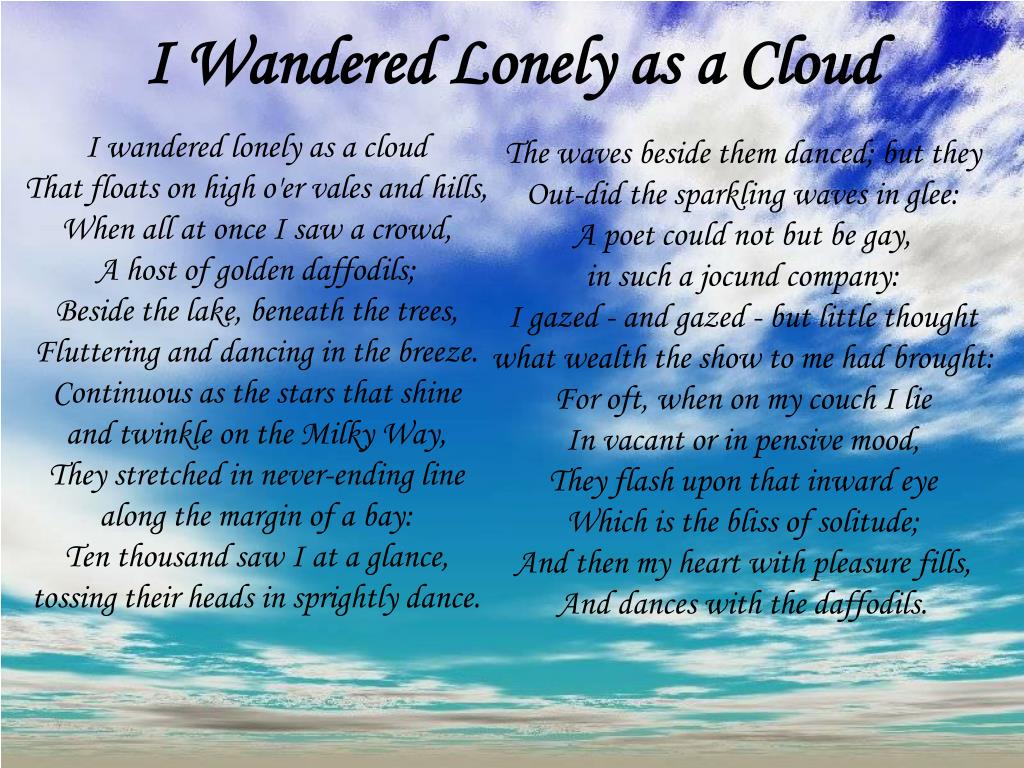

The speaker becomes fascinated by the behavior displayed by the daffodils because they appear to fully enjoy a sense of freedom. After viewing the daffodils, the speaker remembers seeing them “Fluttering and dancing in the breeze” (Wordsworth 6).

Wordsworth incorporates personification to emphasize the significance of his poem.

Wordsworth uses this impression to show that simplicity, such as that of daffodils, can be fulfilled just as much as the marvelousness of the stars. When listening to Dumezweni, the BBC speaker, the listener is able to visualize the splendor of the staging as the author compares the shining plethora of stars with flowers. The speaker expresses this sentiment when he says that daffodils are compared to “the stars that shine and twinkle on the milky way” (Wordsworth 7-8). Wordsworth uses another simile to highlight the essence of the simple aspects of life by drawing a comparison between the many heavenly stars and the daffodils. This reaction exemplifies the speaker’s unawareness of the magnificence of the scenery at the time, besides recognizing the importance of appreciating the simple things that life has. Nonetheless, he expressed gratitude for having attained such a valuable memory.

The speaker illustrates a sense of regret for failing to accept that what he had searched for all his life was right there in front of him. The patches of daffodils represent the serenity found in nature which allows people to attain inner harmony. The speaker comes to terms with this fact when he encounters “A host of golden daffodils” (Wordsworth 4). He seems to feel detached from the normal aspects of life until he finds a simple and fulfilling solution, which is nature. The speaker perhaps compares his solitude to that of clouds as they wander purposelessly in the sky. The term “wandering” suggests that the protagonist was simply walking aimlessly with no specific destination or mission to fulfill. Through the use of simile, Wordsworth is likening himself to a cloud as he describes his surroundings. The first stanza of the poem reads, “I wandered lonely as a cloud,” which is a clear indication that the speaker was alone during the experience (Wordsworth 1). Finally, the last section discusses the author’s use of metaphoric diction to underscore nature as the central subject.įrom a reading of the poem by Noma Dumezweni on BBC radio, listeners become engaged by the narrator’s laidback tone. In anthologies the poem is sometimes titled „I wandered lonely as a cloud.The first part of the paper exemplifies to the reader how Wordsworth incorporates similes, while the second part illustrates the narrator’s use of personification to underline the poem’s central theme. It was first published in 1807, and a revised version was released in 1815. It was inspired by an Apevent in which Wordsworth and his sister Dorothy came across a „long belt" of daffodils. „I Wandered Lonely as a Cloud" (also known as „The Daffodils") is an 1804 poem by William Wordsworth. That floats on high o'er Vales and Hills,


 0 kommentar(er)
0 kommentar(er)
